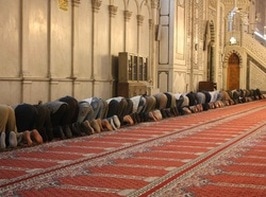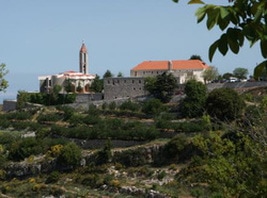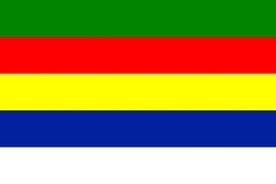Home to 18 religions, Lebanon is the most religiously diverse country in the Middle East. Its main religions are Christianity (about 40%), Islam (about 60%) and Druze (about 5%).
Sunnis and Shi’ites
Very soon after Islam became an official religion - founded by the Prophet Mohammed in 610 asserting “there is no God but God and Mohammed is His messenger” - a conflict arose about the succession of caliphs, causing a rift between the sects currently known as Sunnis and Shi’ites. According to the Sunnis, caliphs should be chosen among the most virtuous of Muslims. Accordingly, the caliphate of the Prophet Mohammed was succeeded by Abu Bakr and then followed by Umar and Uthmar. After the latter was killed, the Shi’ites claimed that only descendants of Mohammed could become caliph, thereby rejecting the legitimacy of the first three caliphs. The fourth caliph, Ali, was the cousin of Mohammed and husband to his daughter Fatima, and therefore became the first and last caliph recognized by Shi’ites. In 680, Hussein, the son of Ali, revolted but was slain on the 10th day of the battle of Karbala. The day of his martyrdom is still celebrated by 10 days of mourning during the Ashura. The Shi’ites are still waiting for a descendent of Ali to emerge as the next prophet (Mahdi). There is a 10th-century offshoot of the Shi’ites called the Alawi’ites (followers of Ali) who worship Ali to this day. In Lebanon, about 60% of the Islamic population is Sunni, while 40% consider themselves Shi’ite.
Very soon after Islam became an official religion - founded by the Prophet Mohammed in 610 asserting “there is no God but God and Mohammed is His messenger” - a conflict arose about the succession of caliphs, causing a rift between the sects currently known as Sunnis and Shi’ites. According to the Sunnis, caliphs should be chosen among the most virtuous of Muslims. Accordingly, the caliphate of the Prophet Mohammed was succeeded by Abu Bakr and then followed by Umar and Uthmar. After the latter was killed, the Shi’ites claimed that only descendants of Mohammed could become caliph, thereby rejecting the legitimacy of the first three caliphs. The fourth caliph, Ali, was the cousin of Mohammed and husband to his daughter Fatima, and therefore became the first and last caliph recognized by Shi’ites. In 680, Hussein, the son of Ali, revolted but was slain on the 10th day of the battle of Karbala. The day of his martyrdom is still celebrated by 10 days of mourning during the Ashura. The Shi’ites are still waiting for a descendent of Ali to emerge as the next prophet (Mahdi). There is a 10th-century offshoot of the Shi’ites called the Alawi’ites (followers of Ali) who worship Ali to this day. In Lebanon, about 60% of the Islamic population is Sunni, while 40% consider themselves Shi’ite.
Maronites
In the fifth century, after a period of religious strife, a group of Christians separated from Orthodox Christianity and called themselves Maronites. The name comes from St Maroun, a fourth-century hermit who lived in what is now Syria. The Maronites believe that their heritage dates back to the time of Jesus. In 687, they appointed their own patriarch and since 1180, their religion is officially recognized as a branch of the Roman Catholic Church. Upon the arrival of the Muslim Arabs in the seventh century, the Maronites welcomed them as saviors from the hated Orthodox Byzantine rulers. However, when the Maronites started to support the Crusaders, the Muslims began to question their loyalty and punished them along with the rest of the Christians. To escape their suppression, the Maronites fled to the north of Mount Lebanon. In the 15th century, more Maronites, including the Maronite Patriarch, settled there, this time escaping from the Ottomans. In the 17th century, Maronites from the north of Mount Lebanon moved to the predominantly Druze south and settled there under the protection of the Maan and Shehab Emirs. As early as the 16th century, the French considered themselves the protector of the Maronites, with whom they formed an alliance between 1920 and 1943. Maronite affinity for French identity and the West can be tied to this history, although they slowly integrated their Lebanese identity as well. The Monastery of Saint Maroun in Annaya (www.saintcharbel-annaya.com) holds the tomb of St Charbel and is a popular place for Pilgrimage .
In the fifth century, after a period of religious strife, a group of Christians separated from Orthodox Christianity and called themselves Maronites. The name comes from St Maroun, a fourth-century hermit who lived in what is now Syria. The Maronites believe that their heritage dates back to the time of Jesus. In 687, they appointed their own patriarch and since 1180, their religion is officially recognized as a branch of the Roman Catholic Church. Upon the arrival of the Muslim Arabs in the seventh century, the Maronites welcomed them as saviors from the hated Orthodox Byzantine rulers. However, when the Maronites started to support the Crusaders, the Muslims began to question their loyalty and punished them along with the rest of the Christians. To escape their suppression, the Maronites fled to the north of Mount Lebanon. In the 15th century, more Maronites, including the Maronite Patriarch, settled there, this time escaping from the Ottomans. In the 17th century, Maronites from the north of Mount Lebanon moved to the predominantly Druze south and settled there under the protection of the Maan and Shehab Emirs. As early as the 16th century, the French considered themselves the protector of the Maronites, with whom they formed an alliance between 1920 and 1943. Maronite affinity for French identity and the West can be tied to this history, although they slowly integrated their Lebanese identity as well. The Monastery of Saint Maroun in Annaya (www.saintcharbel-annaya.com) holds the tomb of St Charbel and is a popular place for Pilgrimage .
Druze
Founded in Egypt in the 10th and 11th centuries as a splinter group from Shi’ite Islam, the Druze have eliminated all elements of ritual and ceremony; they reject the five pillars of the Islam, do not visit mosques and have no defined holy days. Druze believe in reincarnation and one can only a Druze by birth. Convertion to the Druze religion is therefore impossible. Actual religious practice is limited to a very small elite group of people (‘initiates’ or ‘uqqal’), who are also the only ones having access to the seven religious books (‘hikmeh’). In Lebanon, Druze are mainly found in the south of Mount Lebanon, where the elite men can be recognized by their moustaches, low-hanging trousers and white caps. Druze women mostly wear white veils and long black dresses. The local heroes of the Druze are Fakhr el-Dine Maan II and their current leader Walid Jumblatt.
Founded in Egypt in the 10th and 11th centuries as a splinter group from Shi’ite Islam, the Druze have eliminated all elements of ritual and ceremony; they reject the five pillars of the Islam, do not visit mosques and have no defined holy days. Druze believe in reincarnation and one can only a Druze by birth. Convertion to the Druze religion is therefore impossible. Actual religious practice is limited to a very small elite group of people (‘initiates’ or ‘uqqal’), who are also the only ones having access to the seven religious books (‘hikmeh’). In Lebanon, Druze are mainly found in the south of Mount Lebanon, where the elite men can be recognized by their moustaches, low-hanging trousers and white caps. Druze women mostly wear white veils and long black dresses. The local heroes of the Druze are Fakhr el-Dine Maan II and their current leader Walid Jumblatt.




